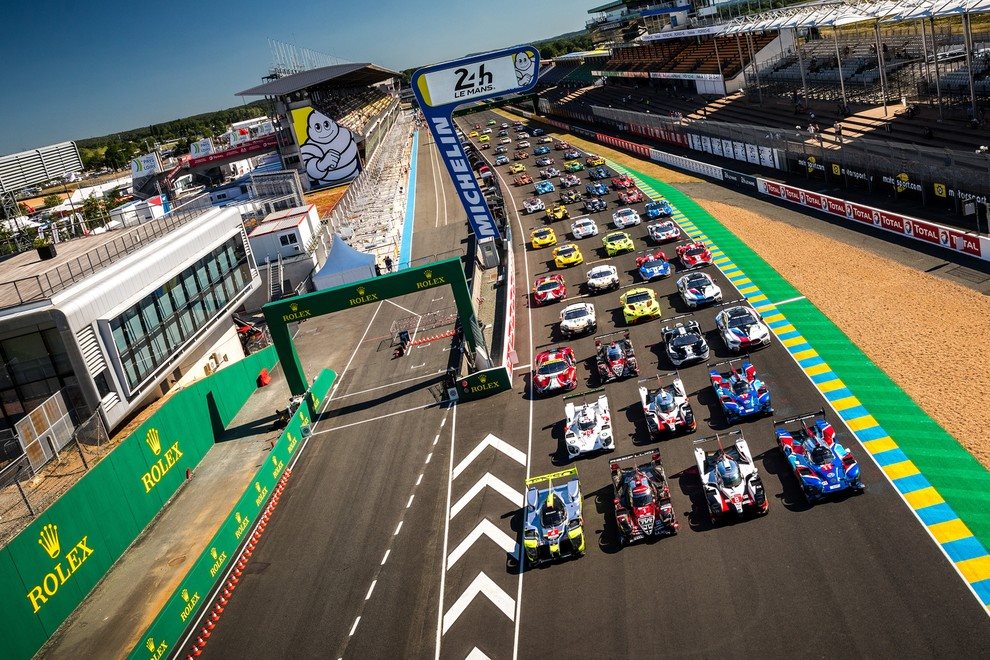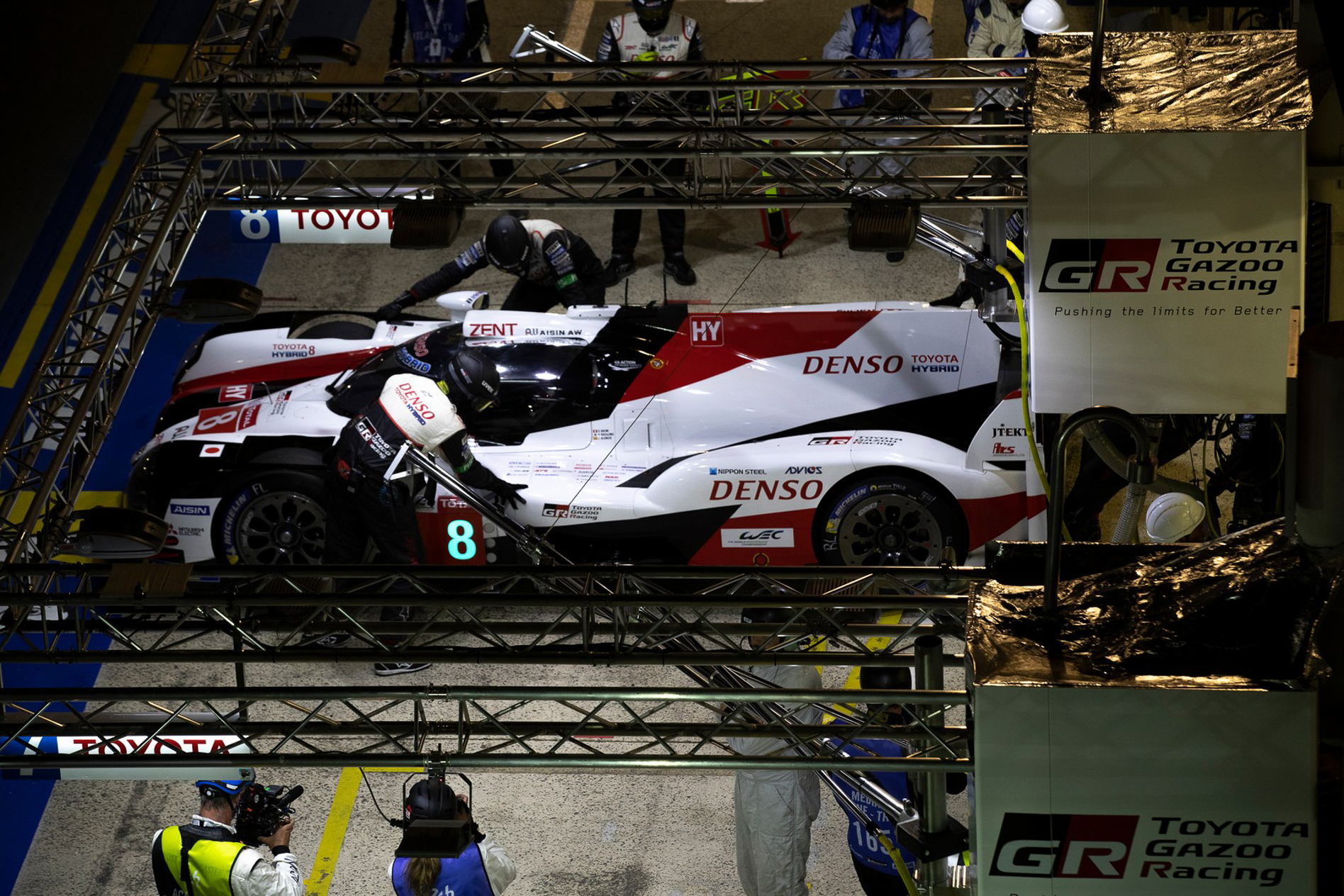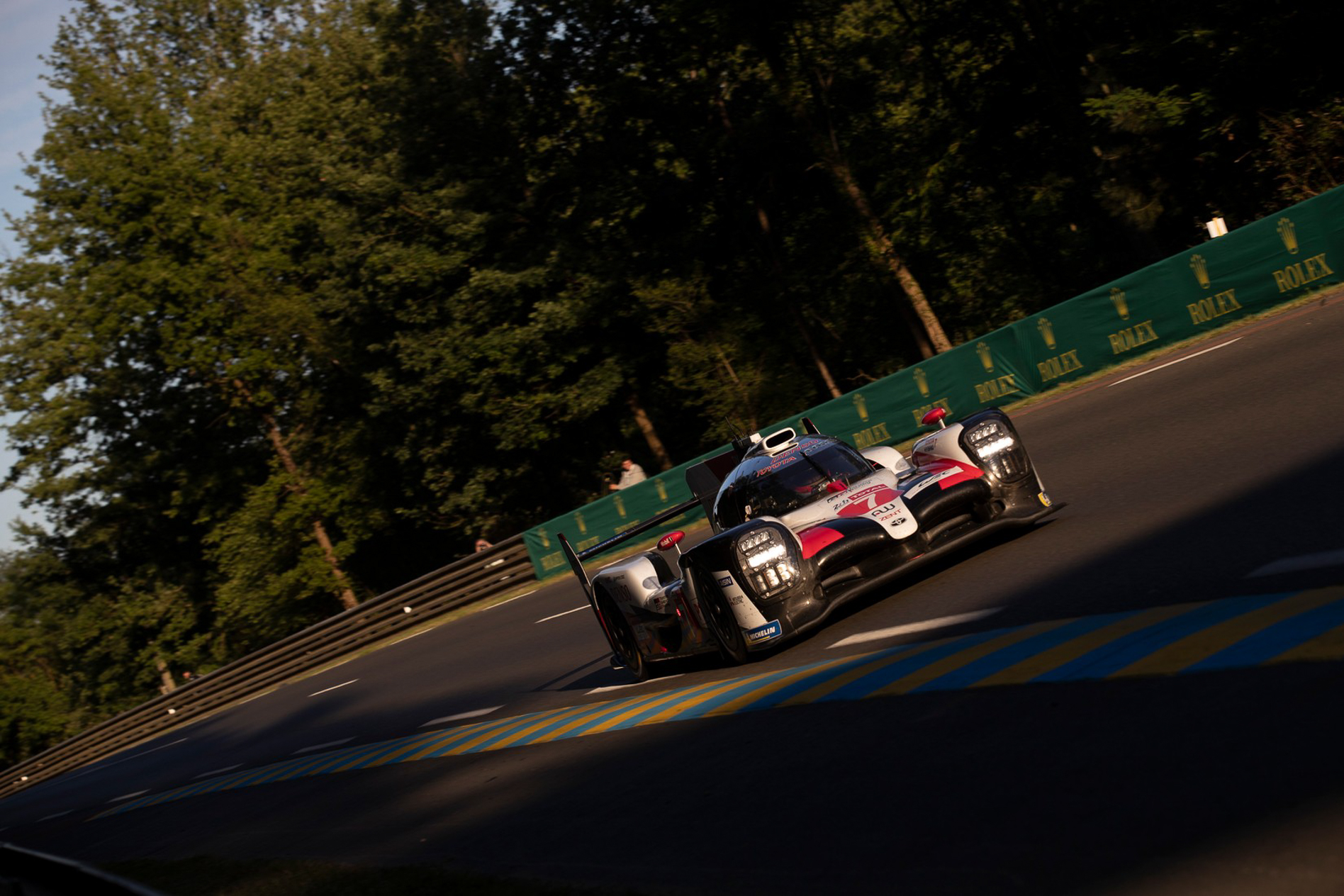
This weekend France hosts the 87th running of the world’s most famous 24-hour race, the 24 Heures du Mans. This is the road race that makes our esteemed Bathurst 1000 look like a quick afternoon sprint.
Car companies like Toyota, Audi, Porsche, BMW and others have spent millions of dollars building wild prototype cars and assembling huge teams of up to 300 people as they strive to win this round-the-clock race of attrition between man and machine.
And yet, it’s probably most famous with Australians for being the race in which Mark Webber spectacularly flipped not one but two Mercedes-Benz race cars, back in 1999.
The 24 Heures du Mans is run every June at the Circuit de la Sarthe just outside of Le Mans in northern France. Each year more than 250,000 spectators descend on the track to watch the world’s best drivers compete for victory – drivers from Formula One and IndyCar racing wheel to wheel with Hollywood stars and celebrities.
It’s that kind of event.
It is the world’s oldest active sports car race, held annually since 1923. It’s been the site of many titanic battles between carmakers over the years, and in modern times has seen a string of dominations, none more impressive than Audi’s 13 wins from 15 attempts between 2000 and 2014.
This year, WhichCar has embedded with the Toyota WEC Team (World Endurance Racing) as they attempt to go back to back. It’s been a long, hard road for Toyota which is now competing in its eighth WEC season, but the Japanese brand is an almost unbackable favourite to take out this year’s race.
In fact, many believe the only thing that can beat Toyota is Toyota.
Here are a few interesting facts about the Le Mans 24 Hour race.
- Beer is cheaper than water in many campgrounds (we checked)
- Dane Tom Kristensen has won a record nine times
- Each car has at least three drivers, although prior to the 1953 event some teams attempted to do the race with one driver
- Luigi Chinetti and Peter Michael Thomson won the 1949 race, but it was Chinetti who did all but 20minutes behind the wheel
- The last Australian to win was David Brabham in 2009, driving a Peugeot
- His brother Geoff Brabham won in 1993, also driving a Peugeot
- Two other Australians have won Le Mans: Vern Schuppan in 1983 and Bernard Rubin back in 1928
- Peter Brock and Larry Perkins had a go in 1984, in a Porsche 956, and were doing okay until the car crashed out with six hours left to run. Rumour has it Perkins was 4sec a lap quicker than Brock
- New Zealander Earl Bamber won the premier LMP1 category with Porsche in 2015 and 2017
- Aussie whizz kid Matt Campbell won the GTE AM race in 2018 with a Porsche 911 RSR
- The race used to start with drivers on the opposite side of the track to their cars. This was abandoned in 1970 due to safety concerns.
- Le Mans still holds the dubious record of the world’s deadliest motorsport incident, when a Mercedes flipped into the crowd in 1955 and caught fire, killing 84 people and injuring another 120.
- The last driver to die at Le Mans was Dane Allan Simonsen, in 2013. The Bathurst 12-Hour qualifying trophy is named after him.
The Cars
Today, the Le Mans 24 Hour has four main car categories ranging from wild Le Mans Prototypes (LMP) machines to more conventional road cars.
There are two LMP categories – LMP1 and LMP2 – for purpose-built race cars that bear absolutely no resemblance to road cars.

LMP1 cars are all-wheel drive, weigh around 870kg (including driver), and can produce up to 745kW (1000hp) of power from their petrol or hybrid engines. The teams are free to evolve or modify their chassis and bodywork to achieve the highest performance, which saw some crazy bodystyles in the 1990s and 2000s. Today, the rules stipulate that the cockpit must be enclosed. Oh, and they have limits on how much fuel they can burn and electricity they can expend per hour. They are the Formula 1 cars of the endurance world.
LMP2 cars look just as wild, but are slightly less frightening. Teams have four different chassis/bodies to choose from, each weighing around 930kg, and are not allowed to mess with them in any way or shape. The engine, too, is a regulated component – a 4.2-litre Gibson (Nissan) V8 producing around 450kW. Oh, and the cars are only rear wheel drive. Put that all together and LMP2 cars are around 10 seconds a lap slower that the brutal LMP1 cars at Le Mans.
The other two categories are GT Endurance Pro and GT Endurance AM. These cars have a lot in common with conventional road cars such as the Porsche 911, Chevrolet Corvette, Ford GT, Ferrari 488 and Aston Martin Vantage.

But the differences can be substantial. For example, the road-going Porsche 911 is called a rear-engine car because the engine hangs out over the rear axle. But the 911 GTE car has the engine practically inside the cabin behind the driver – a change Porsche made to make the car more competitive.
Generally, the biggest difference between GTE Pro and GTE AM is that GTE AM teams must have at least one amateur driver (AM = amateur). GTE AM cars must also be at least a year old to keep the cost of competing down.
The Toyota TS050
Toyota first entered its current Le Mans Prototype in the 2016 event. This state of the art carbon fibre race car is built for speed and downforce. It’s powered by a high tech petrol-electric drivetrain which combines a potent twin-turbo 2.4-litre V6 petrol engine with two electric motors to deliver a combined output of 1,000hp.

Add that to the LMP1’s standard all-wheel drive system and you get a car that New Zealand’s Le Mans winner and former F1 driver Brendan Hartley says “accelerates out of corners harder than any machine I’ve ever driven”.
Circuit de la Sarthe
For years Australians considered Bathurst to be the world’s second longest racetrack after the Nurburgring, even though the Le Mans track is a whopping 13.6km in length, which more than doubles Bathurst.
Perhaps it’s because the Le Mans track is not a permanent track – two-thirds of its length consists of real-world roads. But then Bathurst is not a permanent track either.
The Circuit de la Sarthe used to have a 6km main straight – Mulsanne Straight – on which cars would hit more than 400km/h, before two chicanes were put in back in 1990, effectively splitting it into three shorter straights.
Now, the fastest cars will be lucky to top 350km/h. Last year’s race-winning Toyota TS050 peaked at 336km/h, but still managed to average 251km/h per lap.
Stay tuned for more over the weekend!



